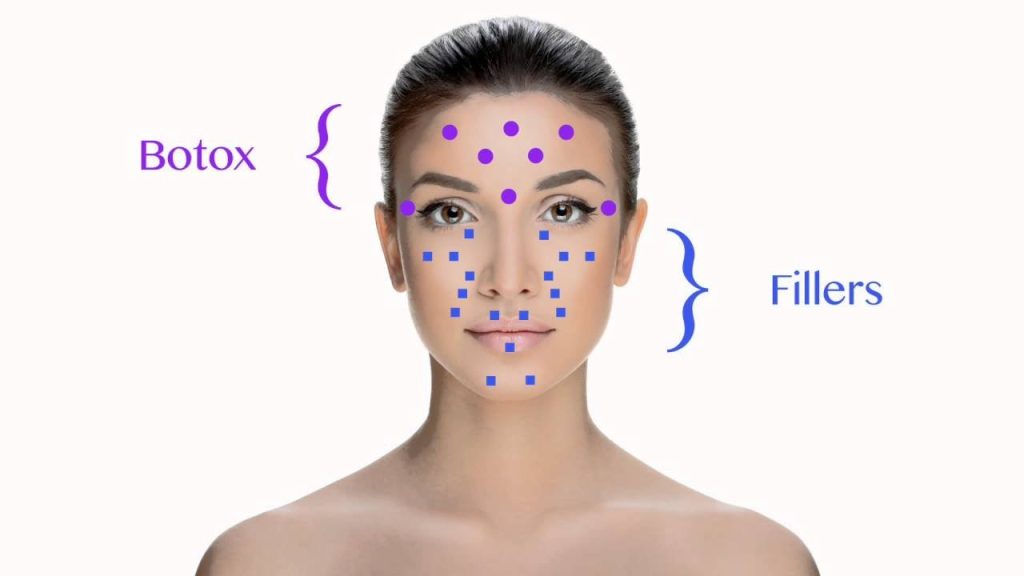Considering cosmetic treatments but unsure about choosing BOTOX® vs fillers? Both options have unique benefits, and the best choice depends on your skin type, concerns, and desired results. Here’s a clear guide to help you understand which treatment might be perfect for you.
What Are BOTOX® and Dermal Fillers?
BOTOX® is an injectable treatment made from botulinum toxin, used primarily to relax muscles and reduce dynamic wrinkles—those caused by facial expressions like smiling, frowning, or squinting. It’s widely recognized as one of the leading anti-wrinkle treatments.
Dermal fillers, on the other hand, are substances (often hyaluronic acid-based) injected under the skin to add volume, smooth lines, and restore youthful contours. Fillers target static wrinkles—those present even when your face is at rest—and provide facial volume restoration.
Dynamic Wrinkles vs. Static Wrinkles: Key Differences
Understanding wrinkle types is crucial in deciding between BOTOX® and fillers.
- Dynamic wrinkles appear when you move your facial muscles, such as forehead lines and crow’s feet around your eyes.
- Static wrinkles are deeper, persistent wrinkles that remain visible even when your face is still, commonly around the mouth, cheeks, and under the eyes.
BOTOX® is excellent at addressing dynamic wrinkles, while fillers are most effective on static wrinkles.
Non-Surgical Facial Rejuvenation: Which Option Lasts Longer?
Treatment longevity differs significantly between BOTOX® and dermal fillers. Typically, the effects of BOTOX® last around three to six months, depending on individual metabolism and lifestyle. After this period, muscle movement gradually returns, requiring maintenance sessions for sustained results.
Dermal fillers usually provide longer-lasting effects—typically six months to two years—depending on the type and area treated. Thicker fillers intended for deeper facial volume restoration generally last longer than lighter ones used for subtle enhancements like lip plumping.
Side Effects: BOTOX® vs. Fillers
Side effects for both treatments are minimal but worth knowing.
BOTOX® side effects may include mild bruising, swelling, redness, and rarely, temporary muscle weakness or drooping eyelids. These usually resolve within a few days to weeks.
Filler side effects might include swelling, redness, bruising, lumps, or tenderness at the injection site. Though rare, fillers carry a slight risk of allergic reactions, making it essential to discuss your allergies with your injector.
Cost of BOTOX® and Fillers: Which is More Affordable?
When considering cosmetic injectables, cost matters. Generally, BOTOX® pricing depends on the number of units required, usually ranging from $300 to $700 per treatment area.
Dermal fillers often have a higher upfront cost, typically ranging from $600 to $1500 or more per syringe. However, because fillers last longer, the overall annual investment can be comparable or even lower than regular BOTOX® treatments.
Cosmetic Injectables: Ideal Candidates for Each Treatment
Choosing between BOTOX® vs fillers comes down to your aesthetic goals:
Choose BOTOX® if:
- Your main concern is dynamic wrinkles like crow’s feet, forehead lines, or frown lines.
- You prefer a subtle, refreshed look without added volume.
- You want a quick procedure with minimal downtime.
Choose Dermal Fillers if:
- You wish to restore lost facial volume, enhance cheeks, or achieve fuller lips.
- Your main concern is static wrinkles, such as nasolabial folds or marionette lines.
- You’re looking for results lasting six months or longer.
Some people benefit from combining both BOTOX® and fillers to achieve comprehensive facial rejuvenation.
How to Decide: Expert Advice Matters
Dr. Marina Peredo, a renowned dermatologist at Skinfluence in NYC, advises, “Patients often ask me which treatment is better, but it’s about understanding your personal skin needs. For expression lines, I recommend BOTOX®, but for deeper wrinkles or facial contouring, fillers give better results” (Skinfluence NYC).
Consulting an experienced professional is crucial. They’ll evaluate your skin, lifestyle, and cosmetic goals to recommend a personalized treatment plan.
Enhancing and Prolonging Results with Skincare
Combining injectable treatments with a tailored skincare routine ensures lasting benefits. Regular moisturizing, sun protection, and ingredients like vitamin C or retinol can enhance and extend results, making your non-surgical facial rejuvenation even more effective.
Final Thoughts: Your Beauty, Your Choice
Deciding between BOTOX® and fillers isn’t about choosing what’s popular—it’s about understanding your unique beauty goals and preferences. Evaluate what matters most to you: subtle smoothness, restored facial volume, or both.
When done professionally, both treatments deliver natural, youthful results that boost confidence and enhance your beauty. The key lies in working with an experienced injector who understands your aesthetic goals.
Choose confidently, knowing you’re making a choice that suits your individual beauty needs.
Botox®, Prescription Medicine For the treatment of frown lines and crow’s feet around the eyes. Botox® has risks and benefits. Ask your doctor if Botox is right for you. Botulinum toxin type A 50, 100, 200 Units. For product information check with your doctor or Consumer Medicine Information on www.medsafe.govt.nz. Click for further details. Allergan, Auckland.

